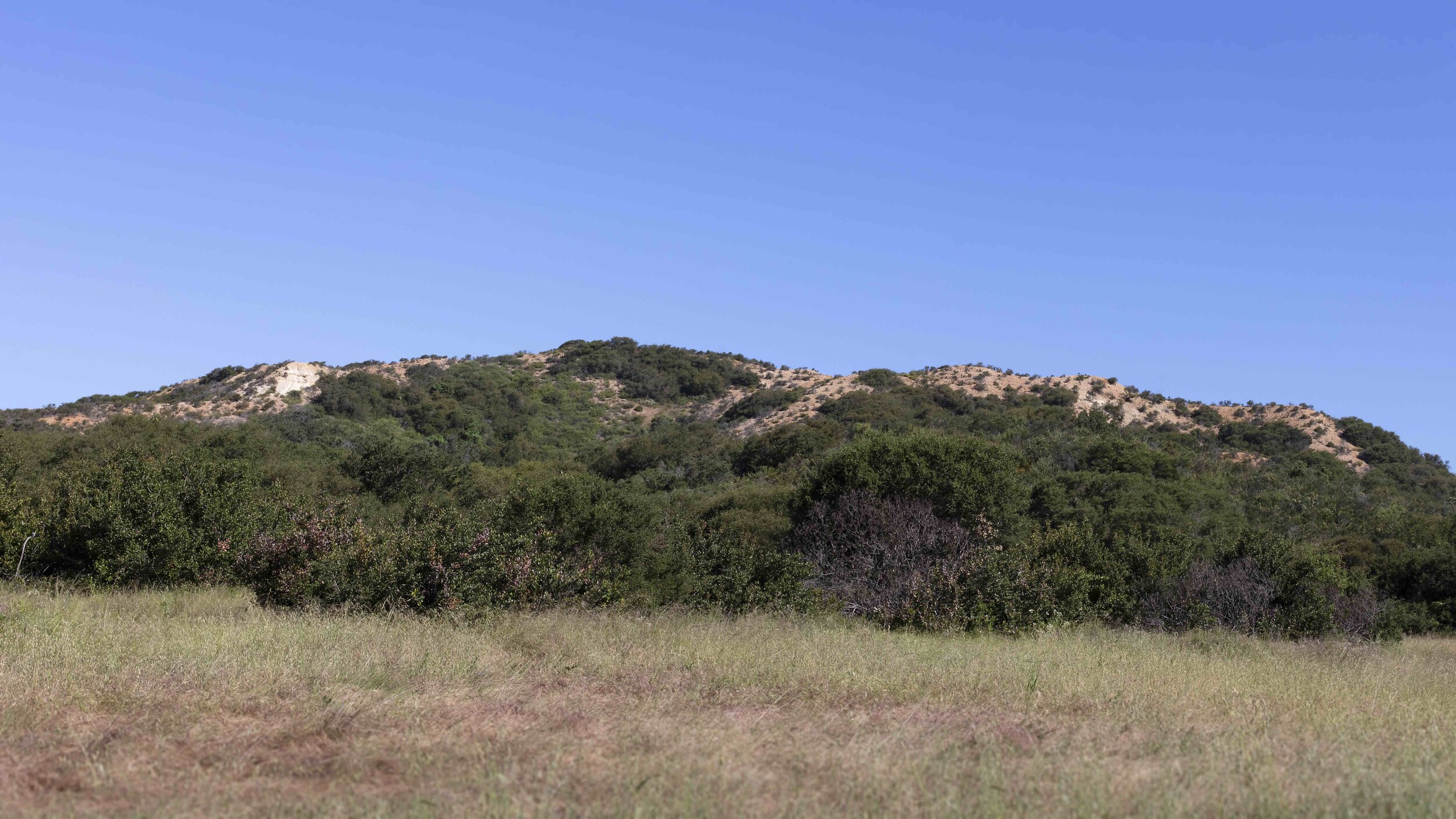
About Nature.
Geology.
“Peñasquitos” means “little cliffs” in Spanish. The canyon walls (cliffs) are gently sloped terraces of marine sediments, with bluffs ranging from 200 to 400 feet above sea level. The current landscape of Peñasquitos Canyon, Carmel Valley, and Del Mar Mesa began over 150 million years ago when the coastline was further to the east and these areas were underwater.
The oldest rocks in the canyon are called the Peñasquitos Formation, formed when volcanic ash, clays, silts, sands, and sandy pebbles were deposited in a shallow trench along the continental edge, about 150 million years ago. The sediments and volcanic rock were mildly metamorphosed by heat and pressure into shales and metavolcanics rocks. The best place to see these rocks is the waterfall.
Habitats.
Los Penasquitos Canyon and Black Mountain Open Space host several different habitats, each one with specific plant communities adapted to the local microenvironment.
A number of rare plants and animals, adapted to extreme environmental variations are found for example in vernal pools, while endangered grasses and wildflowers survive in patches of grassland, an ecosystem which is especially vulnerable to weeds, and ever shrinking in distribution.
For larger mammals and large top predators the most important features of the Canyon and Open Space areas are probably their size, conservation state, and the presence of wildlife corridors.
In our Preserve and Open Space we are lucky to have
-Coastal sage scrub
-Chaparral
-Old-growth chaparral
-Southern maritime chaparral
-Grasslands
-Riparian areas
-Vernal pools
Birds.
Stop, look and listen! On a typical daytime hike, you will see and hear many bird species. Red-tailed Hawks, White-tailed Kites, and Northern Harriers soar overhead. They spot, catch, and eat squirrels, rabbits, and other small animals. Other common birds are Common Ravens, American Crows, Mallards, California Quail, Mourning Doves, Great Egrets, Great-blue Herons, Acorn Woodpeckers, Annas Hummingbirds, Black Phoebes, Western Bluebirds, California Thrashers, Bushtits, Wrentits, House Finches, Lesser Goldfinches and Towhees (both California and Spotted). Early morning and dusk are the best times to see, hear, and photograph birds.
Wildlife.
The canyon is connected with other natural areas in Peñasquitos estuary, side canyons, and the mountains east of Poway. Wildlife corridors are a precious resource, allowing larger animals to move safely through and thrive across the different habitats, as well as connect to other nearby healthy open spaces. Areas without such connections, are considered fragmented or separated, and diminish access to food, reproduction, and migration.
A few species are tracked by researchers from San Diego State University and the San Diego Tracking Team.
The San Diego Tracking Team is a group of trained observers who monitor and identify the “signs” animals leave behind, both as tracks in the wild and as photos taken by motion-detecting cameras. These trackers have now been “citizen scientists” for more than 20 years, and their data has been used to evaluate the health of key species and the connectivity of open space areas.




